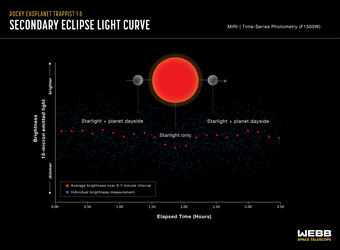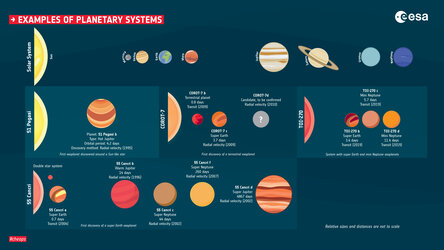Accept all cookies Accept only essential cookies See our Cookie Notice

About ESA
The European Space Agency (ESA) is Europe’s gateway to space. Its mission is to shape the development of Europe’s space capability and ensure that investment in space continues to deliver benefits to the citizens of Europe and the world.
Highlights
ESA - United space in Europe
This is ESA ESA facts Member States & Cooperating States Funding Director General Top management For Member State Delegations European vision European Space Policy ESA & EU Space Councils Responsibility & Sustainability Annual Report Calendar of meetings Corporate newsEstablishments & sites
ESA Headquarters ESA ESTEC ESA ESOC ESA ESRIN ESA EAC ESA ESAC Europe's Spaceport ESA ESEC ESA ECSAT Brussels Office Washington OfficeWorking with ESA
Business with ESA ESA Commercialisation Gateway Law at ESA Careers Cyber resilience at ESA IT at ESA Newsroom Partnerships Merchandising Licence Education Open Space Innovation Platform Integrity and Reporting Administrative Tribunal Health and SafetyMore about ESA
History ESA Historical Archives Exhibitions Publications Art & Culture ESA Merchandise Kids Diversity ESA Brand Centre ESA ChampionsLatest
Space in Member States
Find out more about space activities in our 23 Member States, and understand how ESA works together with their national agencies, institutions and organisations.
Science & Exploration
Exploring our Solar System and unlocking the secrets of the Universe
Go to topicAstronauts
Missions
Juice Euclid Webb Solar Orbiter BepiColombo Gaia ExoMars Cheops Exoplanet missions More missionsActivities
International Space Station Orion service module Gateway Concordia Caves & Pangaea BenefitsLatest
Space Safety
Protecting life and infrastructure on Earth and in orbit
Go to topicAsteroids
Asteroids and Planetary Defence Asteroid danger explained Flyeye telescope: asteroid detection Hera mission: asteroid deflection Near-Earth Object Coordination CentreSpace junk
About space debris Space debris by the numbers Space Environment Report In space refuelling, refurbishing and removingSafety from space
Clean Space ecodesign Zero Debris Technologies Space for Earth Supporting Sustainable DevelopmentLatest
Applications
Using space to benefit citizens and meet future challenges on Earth
Go to topicObserving the Earth
Observing the Earth Future EO Copernicus Meteorology Space for our climate Satellite missionsCommercialisation
ESA Commercialisation Gateway Open Space Innovation Platform Business Incubation ESA Space SolutionsLatest
Enabling & Support
Making space accessible and developing the technologies for the future
Go to topicBuilding missions
Space Engineering and Technology Test centre Laboratories Concurrent Design Facility Preparing for the future Shaping the Future Discovery and Preparation Advanced Concepts TeamSpace transportation
Space Transportation Ariane Vega Space Rider Future space transportation Boost! Europe's Spaceport Launches from Europe's Spaceport from 2012Latest

Super-Earth exoplanet 55 Cancri e (secondary eclipse light curve)
Thank you for liking
You have already liked this page, you can only like it once!
This light curve shows the change in brightness of the 55 Cancri system as the rocky planet 55 Cancri e, the closest of the five known planets in the system, moves behind the star. This phenomenon is known as a secondary eclipse.
When the planet is beside the star, the mid-infrared light emitted by both the star and the day-side of the planet reaches the telescope, and the system appears brighter. When the planet is behind the star, the light emitted by the planet is blocked and only the starlight reaches the telescope, causing the apparent brightness to decrease.
Astronomers can subtract the brightness of the star from the combined brightness of the star and planet to calculate how much infrared light is coming from the day-side of the planet. This is then used to calculate the day-side temperature and infer whether or not the planet has an atmosphere.
The graph shows data collected using the low-resolution spectroscopy mode on Webb’s Mid-Infrared Instrument (MIRI) in March 2023. Each of the purple data points shows the brightness of light ranging in wavelength from 7.5 to 11.8 microns, averaged over intervals of about five minutes. The grey line is the best fit, or model light curve that matches the data most closely. The decrease in brightness during the secondary eclipse is just 110 parts per million, or about 0.011 percent.
The temperature of the planet calculated from this observation is about 1800 kelvins (around 1500 degrees Celsius), which is significantly lower than would be expected if the planet has no atmosphere or only a thin rock-vapour atmosphere. This relatively low temperature indicates that heat is being distributed from the day-side to the night-side of the planet, possibly by a volatile-rich atmosphere.
[Image description: Diagram of a secondary eclipse and a graph of change in brightness over time. Below the diagram is a graph showing the change in brightness of mid-infrared light emitted by the star-planet system over the course of about four and a half hours. The infographic shows that the brightness of the system decreases as the planet moves behind the star.]
-
CREDIT
NASA, ESA, CSA, J. Olmsted (STScI), A. Bello-Arufe (JPL) -
LICENCE
CC BY 4.0 INT or ESA Standard Licence
(content can be used under either licence)

Super-Earth exoplanet 55 Cancri e (emission spectrum)

Rocky exoplanet TRAPPIST-1 b (secondary eclipse light curve)

Exoplanet phase curve

Examples of planetary systems















 Germany
Germany
 Austria
Austria
 Belgium
Belgium
 Denmark
Denmark
 Spain
Spain
 Estonia
Estonia
 Finland
Finland
 France
France
 Greece
Greece
 Hungary
Hungary
 Ireland
Ireland
 Italy
Italy
 Luxembourg
Luxembourg
 Norway
Norway
 The Netherlands
The Netherlands
 Poland
Poland
 Portugal
Portugal
 Czechia
Czechia
 Romania
Romania
 United Kingdom
United Kingdom
 Slovenia
Slovenia
 Sweden
Sweden
 Switzerland
Switzerland

























